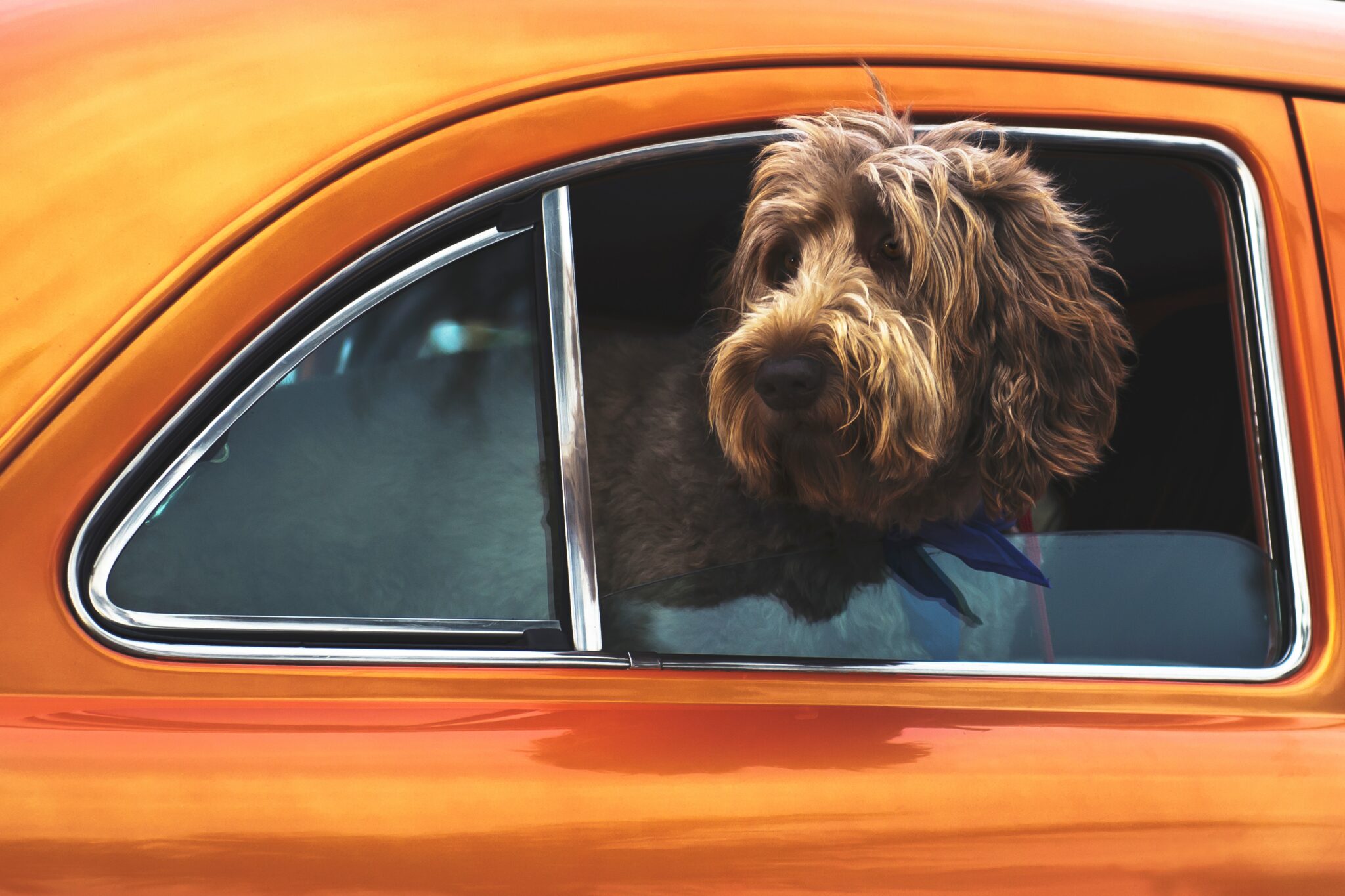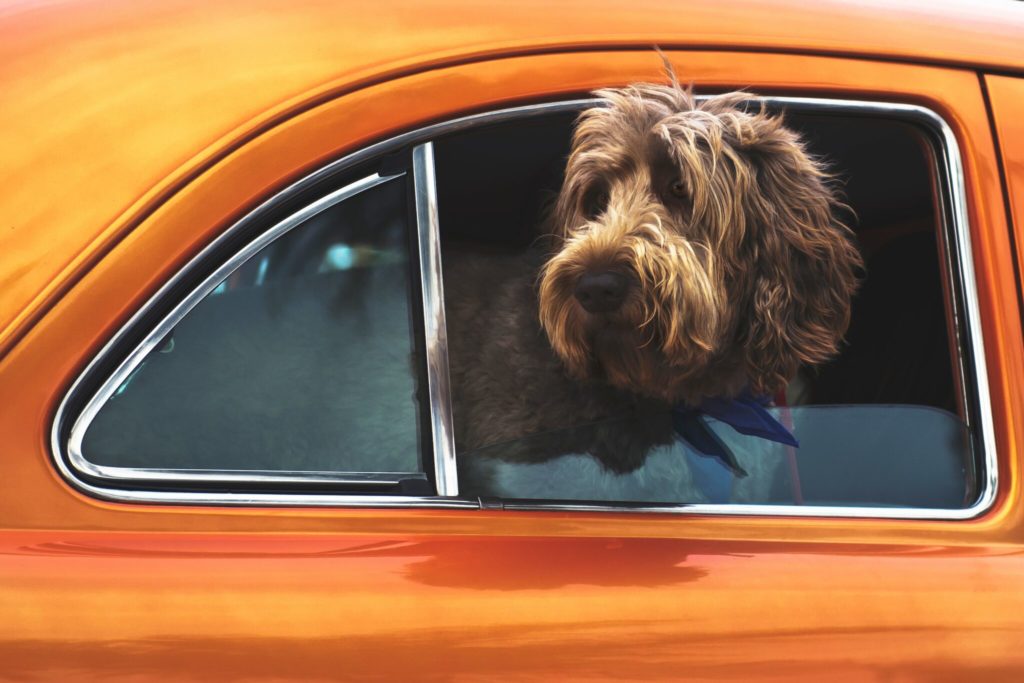The Labradoodle is like a ray of sunshine on a cloudy day; its fluffy coat and perky personality bring light and joy everywhere it goes. This intelligent, friendly hybrid breed has become increasingly popular in recent years. Whether you’re looking for a loyal companion or an active family pet, the Labradoodle could be the perfect fit.
At Puppy Heaven, we understand that choosing the right pet can be overwhelming. That’s why we provide information on different breeds to help you make an informed decision. We’ve compiled this guide to provide you with all the details you need to know about the Labradoodle, including its history, appearance, temperament and more.
Are you ready to learn more about this lovable pooch? Keep reading to find out if the Labradoodle is right for your family!
Labradoodle Origin & History
The Labradoodle is a hybrid breed that has been around for decades and has become increasingly popular in recent years. It’s a mix of the Labrador Retriever and Standard or Miniature Poodle, which makes for an intelligent and social pup. The Labradoodle was first bred in Australia during the late 1980s as an assistance dog for people with allergies to fur or dander. They have since become beloved family companions all over the world thanks to their happy-go-lucky attitude, loyalty, and loving nature.
These pups are great with children, other animals, and strangers alike! They love to please their owners, making them easy to train. Plus they’re incredibly smart—able to pick up commands quickly and follow instructions easily. As such, they’re often used as service dogs, therapy dogs, search-and-rescue canines, and more.
Labradoodles make great pets no matter what size you choose—Standard or Miniature—as they’re full of energy but also calm enough to snuggle up on the couch with you at the end of a long day. Their friendly personalities make them perfect for families looking for an affectionate addition to their lives.
No matter where you live—in the city or out in the country—a Labradoodle can fit right in. So if you’re looking for a loyal companion who will bring lots of love into your home, then this pup might be just what you’re looking for!
Labradoodle Appearance & Size
Have you ever wondered what a Labradoodle looks like? This popular breed is a combination of the Labrador Retriever and Poodle that results in a unique, lovable pooch. Let’s take a closer look at the physical appearance and size of the Labradoodle.
When it comes to Labradoodles, looks can vary depending on which parent breed they take after more. Generally speaking though, they tend to be medium-sized dogs with an average height of 18-24 inches and weigh anywhere from 25-45 pounds. They also have round eyes, floppy ears, and a short muzzle. Plus, their coat has a soft texture and can be curly or wavy.
The color of their coats also varies quite a bit! It ranges from black to white and everything in between including browns, reds, and creams. And if that wasn’t enough variation for you, there are three different types of coat lengths as well: long hair, medium hair, and short hair. All these combinations make for some truly unique looking Labradoodles!
No matter what combination it is though, one thing is certain: every Labradoodle is sure to be an adorable pup! With all these options available for this beloved breed, no two Labradoodles are ever exactly the same – making them even more special! Now let’s explore what makes up their unique personalities next.
Labradoodle Temperament & Personality
Are you curious about the temperament and personality of a Labradoodle? This lovable breed is known for its intelligence, loyalty, and fun-loving nature. Let’s take a closer look at what makes them such amazing pets!
The Labradoodle is an incredibly friendly and social breed. They love to be around people, especially their family members, and they are always up for some quality playtime with their favorite humans. They get along well with other pets and children too – in fact, they often form strong attachments to both. Though they may be vocal when playing or feeling excited, they tend to be quiet when indoors.
The Labradoodle is an exceptionally intelligent breed that loves to learn new tricks. Their eagerness to please makes them highly trainable, so teaching them basic commands will likely come easy. With consistent training and positive reinforcement from their owners, these dogs can become obedient family companions in no time!
Labradoodles also have a playful side; they enjoy outdoor activities like hiking and swimming as much as indoor activities like snuggling on the couch or playing fetch in the yard. An ideal day for this breed would include plenty of mental stimulation and physical exercise followed by lots of cuddles afterwards.
Labradoodle Health & Lifespan
When it comes to health and lifespan, the labradoodle is a real mixed bag. Like most designer dogs, they are more prone to hereditary problems than their purebred counterparts. However, if you get a pup from a good breeder who has done all the necessary health checks, there’s no reason why your labradoodle won’t live a long and happy life! Here are a few key things to consider when looking into the health of your four-legged friend:
First off, their size and weight can vary hugely depending on the size of the parents used in breeding. This means that some may be more vulnerable to certain issues than others. Secondly, since they have floppy ears like other breeds with this characteristic, labradoodles can be more prone to ear infections. Finally, hip dysplasia is something which affects many large breed dogs – including this one – so it’s important to check that potential puppies have been screened for this condition.
In terms of lifespan, both parent breeds tend to live around 12-15 years. As long as your pup stays healthy and active throughout its life, it should have no trouble reaching that age or beyond!
Given all this information about health and lifespan of labradoodles, it’s important that owners take extra steps in caring for their pet’s wellbeing. So what’s next? Let’s look at the grooming requirements for these furry friends!
Labradoodle Grooming Requirements
When it comes to grooming needs for a Labradoodle, the important thing to remember is that they require regular maintenance. They have a wavy or curly coat and may need professional grooming every few months to keep their coats healthy and looking great. Let’s go over some of the basics you’ll need to know when it comes to grooming your pup.
First, brushing your Labradoodle is important for keeping the coat healthy and clean. A slicker brush with metal bristles is the best way to brush their long coats. You’ll also want to bathe them regularly with dog shampoo, and make sure you get all the dirt out of their ears as well. Additionally, trimming their nails will help keep them in good shape and protect their paw pads from scratches on hard surfaces.
It can be time-consuming but rewarding taking care of your Labradoodle’s grooming needs on a regular basis. Not only will it keep them looking great, but it can also help prevent skin issues such as mats and tangles in their fur. With consistent brushing and bathing, you can keep your pup looking his or her best! Making sure your pup looks great isn’t all there is to consider though – now let’s talk about training & exercise needs for Labradoodles…
Labradoodle Training & Exercise Needs
Now we’re going to cover training and exercise needs for Labradoodles. They’re an intelligent breed, so they need regular mental stimulation through games and activities to keep them engaged and happy.
Labradoodle owners should plan for daily walks or playtime in the yard, as well as activities like fetch or hide-and-seek that challenge the dog mentally. The more exercise a Labradoodle gets, the better its behavior will be. It also helps it stay fit and healthy.
Training is another important part of being a Labradoodle owner. Positive reinforcement training methods are best with this breed, since they respond well to rewards like treats or praise. With consistency and patience from their owners, most Labradoodles can learn basic commands fairly quickly.
Now let’s look at how to feed our furry friend for optimal health!
Labradoodle Diet & Nutrition
Nourishing your pet Labradoodle with the right diet is a great way to keep them healthy and happy. The best food plan for your pup will depend on their age, activity level, and general health. Let’s take a look at what you need to know to feed your Labradoodle properly.
First off, Labradoodles are medium-energy dogs that require an appropriate amount of nutrients in order to stay active and fit. They should be given quality dry food that has been formulated for large breeds, as well as occasional fresh foods like eggs, fruits, vegetables, and meats. Avoid processed foods that contain too much sugar or fat, as these can lead to health problems like obesity. Additionally, puppies should be fed puppy food until they reach 12 months of age. After that point, they can transition to adult kibble.
To ensure your pup is getting all the vitamins and minerals they need for optimal growth and development, make sure you provide them with plenty of fresh water throughout the day. Also consider supplementing their diet with omega-3 fatty acids such as fish oil in order to promote healthy skin and coat. Finally, make sure you talk to your vet before making any major changes to your Labradoodle’s dietary routine so they can advise you on how much food each day is best for their individual needs.
With these tips in mind, you’ll be well on your way towards providing your pup with all the nutrition they need from day one! Moving forward let’s explore the cost of owning a labradoodle as well as its popularity amongst dog owners today…
Labradoodle Popularity & Cost
Labradoodles have grown in popularity over the past few years, and they come with a hefty price tag too. While their cost may be hard to swallow, it’s important to remember that you’re investing in years of companionship and love. Plus, when you purchase a Labradoodle from a reputable breeder, you can rest assured that the pup has been well cared for and is healthy.
When considering the cost of your Labradoodle, think about what it includes. A good breeder will provide vaccinations, microchipping, spaying or neutering services, as well as ongoing care tips. You’ll also need to buy supplies like food and toys to ensure your pup gets all the nutrition and enrichment they need.
It’s also important to factor in other costs such as professional grooming services or vet visits for check-ups and regular health maintenance. All these expenses add up quickly, but when you look at them as an investment in your pup’s wellbeing—it’s worth it!
TIP: Research Labradoodle breeders before purchasing one! Make sure they have good reputations and take great care of their pups. It may be more expensive upfront but it will save you money (and heartache) in the long run.
Labradoodle Adoption & Rescue
Adopting or rescuing a Labradoodle is a great way to give a pup in need a forever home. According to PetFinder, there are currently over 800 Labradoodles available for adoption in the US alone. This statistic provides a visual representation of the many Labradoodles that might need a loving home. Here are three key things to consider when adopting or rescuing a Labradoodle:
Research breed-specific rescues and shelters. Before adopting or rescuing any dog, it’s important to research breed-specific rescues and shelters so you can find the pup that’s right for you. Many of these organizations have specific requirements for prospective adopters, so make sure you understand them before committing to giving one of their pups a home.
Know what to expect from your pup. Every rescue pup is unique, but most Labradoodles have high energy levels and love spending time with their owners – so make sure you’re prepared for lots of walks and playtime! They also tend to be very trainable and smart, which makes them ideal family dogs.
Have realistic expectations about adoption fees. Adoption fees vary depending on the organization, but they generally range from $200-$500 – which is significantly lower than purchasing from a breeder or pet store. These fees help cover medical costs and other expenses associated with caring for rescued pups, so they’re an important part of the adoption process.
Adopting or rescuing a Labradoodle is an incredibly rewarding experience – not only will you be providing them with much-needed love and companionship, but you’ll be doing something good for the animal community as well! Now let’s take a look at some common health issues that can affect Labradoodles, so potential owners can be aware of potential risks associated with this breed.
Common Labradoodle Health Problems
The Labradoodle is a popular dog breed, with the American Kennel Club reporting that their registrations have grown over 300% in the past decade. With such a sharp increase in popularity, it’s important to know more about any potential health problems associated with this breed. Here is what you need to know about common Labradoodle Health Problems.
A study conducted by the University of Sydney found that Labradoodles are predisposed to many inherited diseases, including hip and elbow dysplasia, progressive retinal atrophy, and von Willebrand Disease. These are all serious illnesses, so it’s important for any prospective owners to do as much research into them as possible.
When purchasing or adopting a Labradoodle puppy, always make sure you buy from a reputable breeder who screens for these hereditary conditions. This can help reduce the risk of your pup developing any of these illnesses later on in life. It’s also important to keep up with routine vet visits and regularly monitor your pup’s health. TIP: A great way to keep track of your pup’s health is by keeping an online health journal – this will help you identify any changes in behavior or physical signs which may be indicative of an underlying issue.
Pros & Cons Of The Labradoodle
Are you considering purchasing a labradoodle? We know, who wouldn’t want such an adorable pup! But before you make the big decision, let’s look at the pros and cons of this breed to ensure it’s the best fit for your family.
Satirically speaking, this is not just any dog- it’s a labradoodle! But believe it or not, there are actually some drawbacks to owning one of these pooches. Let’s take a look:
- Labradoodles require a lot of exercise and attention.
- They may be prone to certain health issues such as hip dysplasia or epilepsy.
- Grooming expenses can be high due to their long coats.
- Training can be difficult since they have a tendency to become easily distracted.
At PuppyHeaven, we understand that each family is unique, and that different dogs fit with different homes. That being said, there are also many advantages to owning a labradoodle! For example, they are incredibly intelligent and full of energy – perfect for families with active lifestyles; they love making new friends and socializing; plus, their loyal personalities make them wonderful companions for all ages.
So yes – while labradoodles aren’t perfect in every way – if given the right environment and care they can become an amazing addition to any family. Now that we’ve looked at the pros & cons of getting a labradoodle, let’s move on to the next question: are labradoodles hypoallergenic?
Are Labradoodles Hypoallergenic?
Labradoodles are like a rainbow of joy in the sky, their curly locks and friendly faces filling us with delight. But what about their hypoallergenic status? If you’re considering adding one to your family, it’s important to know if they’ll cause any allergic reactions. Let’s take a look!
When it comes to hypoallergenicity, Labradoodles can range from low-shedding to non-shedding. The best way to determine the level of shedding is by understanding the parent breeds. Labradoodles are a cross between Labrador Retrievers and Poodles, both of which have different levels of shedding. While some Labradoodle parents may be non-shedding, others may shed more than average.
Overall, it is difficult to guarantee that any Labradoodle will be 100% hypoallergenic due to the unpredictable nature of coat genetics. However, since many Labradoodle parents are poodles, which are considered one of the most hypoallergenic dog breeds available, there is a good chance that your Labradoodle pup could have minimal shedding and produce fewer allergens in your home than other breeds.
So whether or not a Labradoodle will be hypoallergenic really depends on their individual genetics and where they come from. With proper grooming and care, you can help reduce any potential allergy triggers in your home — making them an ideal pet for many families!
Is The Labradoodle A Good Family Pet?
The labradoodle is an increasingly popular pup for families. But is this lovable hybrid the right fit for you and yours? Let’s discover if the labradoodle is a great family pet!
Generous, gentle, and good-natured, the labradoodle has many endearing qualities. This intelligent breed loves to learn and can quickly learn commands, making them highly trainable. They are also considered low-maintenance when it comes to grooming, as they have a low-shedding coat that only needs occasional brushing.
Their playful disposition makes them perfect playmates for children of all ages; however, they must be supervised around smaller kids due to their size and strength. They might be a bit too rambunctious for timid or older people who are not accustomed to playing with exuberant pups. That said, this loving breed is sure to bring joy and companionship into any household–especially those looking for a loyal four-legged friend!
Labradoodles require plenty of exercise and love to run off some of their energy. If you can provide your pup with regular activities like walking or jogging around the neighborhood, you will both reap the benefits of a healthy lifestyle! With plenty of training and patience, your new family companion will adjust easily into any home.
Tips On Buying A Labradoodle
Adopting a Labradoodle is like bringing home a bundle of joy that’s packed with energy and poise! This breed is an ideal option for those looking for a four-legged companion, as they are loving and loyal. Here are some top tips to consider when buying a Labradoodle:
• Look for reputable breeders – start your search by finding Labradoodle breeders who specialize in these pups and have experience with the breed.
• Research the parents – ask questions about the parents’ health history, such as any genetic conditions or diseases they may have passed down to their offspring. It’s also important to learn about the temperament of both the mother and father dog.
• Consider cost – be sure to factor in upfront costs, such as adoption fees or veterinary bills. Also take into account future expenses like food, toys, grooming supplies, and veterinary care.
• Ask questions – make sure you know exactly what you’re getting into before bringing home your pup. Ask questions like how much exercise they need, how often they should be groomed, and how often they need check-ups at the vet.
At PuppyHeaven we want to ensure that your new pup fits seamlessly into your life! That’s why it’s important to do research ahead of time so that you can be fully prepared with all of the necessary supplies for your pup’s arrival. And don’t forget – Labradoodles make great family pets! With all that being said, let’s take a look at some fun labradoodle pictures & videos!
Labradoodle Pictures & Videos
Ready to take the plunge into Labradoodle land? Then you’ll love this section! Here’s a gallery of pictures and videos showcasing what these pooches are all about.
If you’re considering buying a Labradoodle, here are some tips to help you out:
- Choose a reputable breeder that has experience with the breed.
- Ask for references from other owners who have purchased puppies from them.
- Make sure they provide health clearances and a written contract.
- Observe how the puppy interacts with its siblings and parents before taking it home.
Labradoodles make wonderful family companions, so why not get an up-close look at what they’re like? From their unique personalities, to their goofy antics, our collection of pictures and videos will give you an idea of life with this lovable dog breed. We’ve gathered clips of Labradoodles being adorable, having fun, and living out their best doggy lives – just as they deserve! Get ready to be charmed by some of the cutest pooches around!
Conclusion
com
Labradoodles have become a popular breed over the years due to their intelligence, friendliness and great temperaments. They are also low-shedding and relatively hypoallergenic, making them an ideal choice for those with allergies.
These pups are the perfect companion for families who want a dog that is easy to train and can fit in with any type of lifestyle. With proper socialization and training, they will make loyal, loving friends who will always be there by your side.
Labradoodles are like the gemstones of the canine world – rare, yet valuable beyond measure. They may require more maintenance than other breeds but their unconditional love, loyalty and affection make it worth all the effort. So if you’re looking for a pup that’s as unique as a diamond in the rough, consider a Labradoodle!







